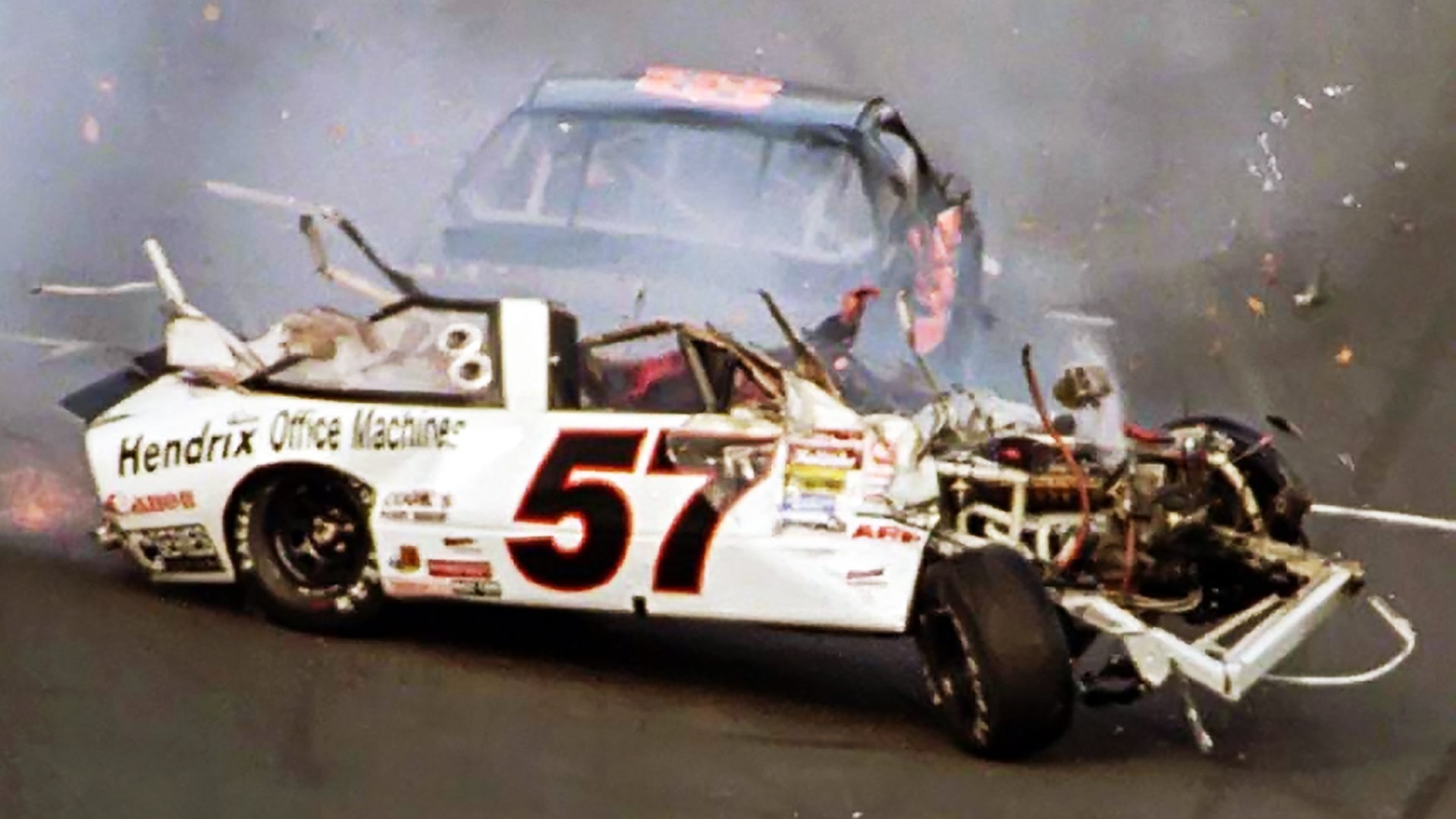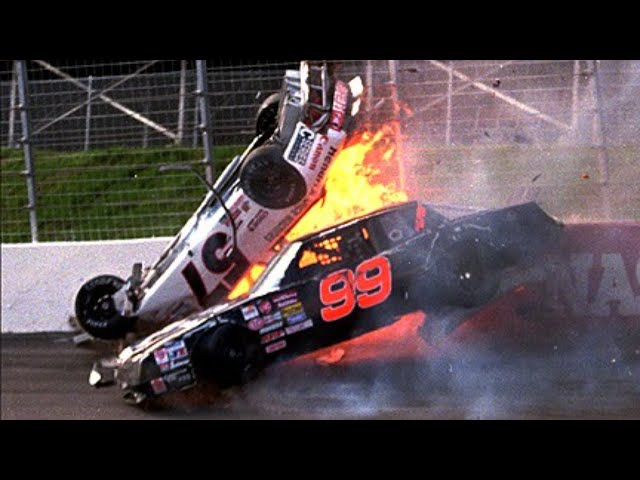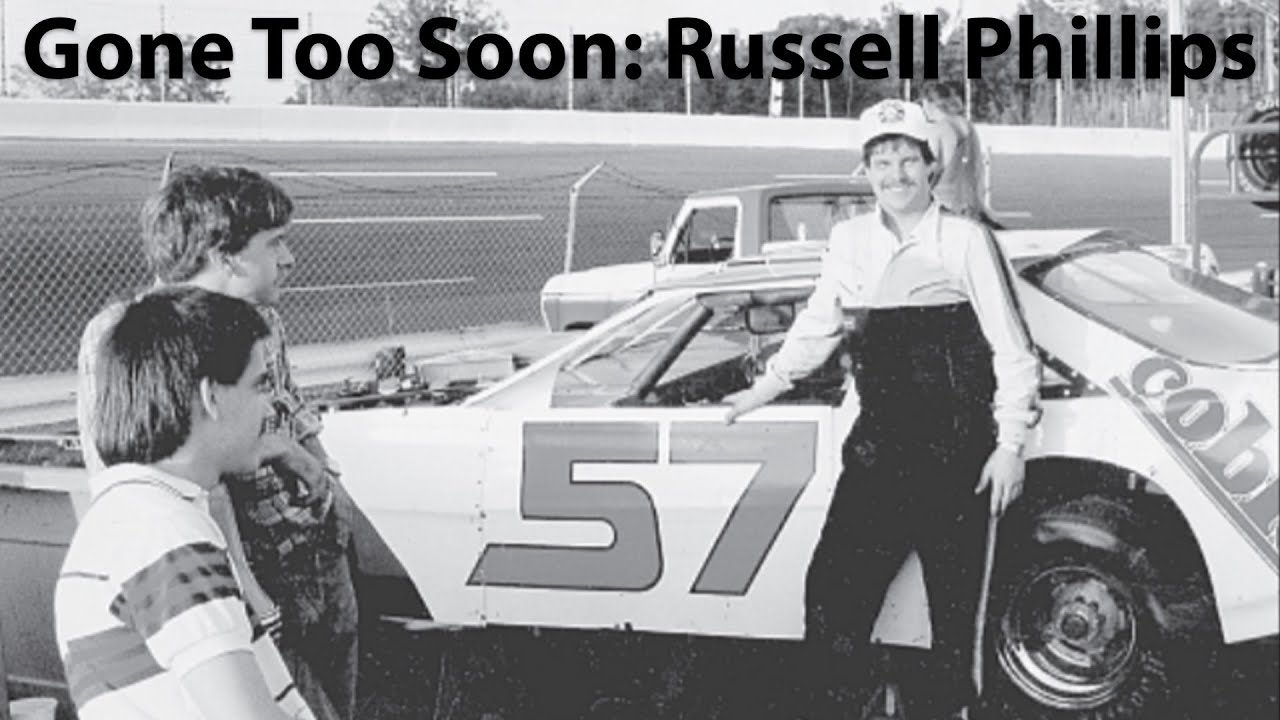Exploring the Russell Phillips Accident Original Video
Russell Phillips’ accident original video captures one of the most harrowing moments in NASCAR history, a stark reminder of the dangers faced by drivers in the high-speed world of motorsport. Russell Phillips, a devoted NASCAR Sportsman Division driver, met a tragic end on October 6, 1995, during the Winston 100 race at Charlotte Motor Speedway. His life and career, though brief, left an indelible mark on the sport and its safety protocols.
Born on March 6, 1969, in Mint Hill, North Carolina, Phillips was more than just a race car driver; he was a fabricator, volunteer firefighter, preacher, and a beloved figure in his community. His early years were spent under the influence of a racing environment, working for his father’s truck equipment company before venturing onto the short tracks across the Carolinas. His move to NASCAR’s Sportsman Division was a significant step in pursuing his passion for racing.
Phillips drove the No. 57 car, a vehicle he owned and operated independently. Throughout most of his career, he remained a middle-of-the-pack driver, often overlooked by the media. However, 1995 saw a turning point when Phillips began to garner attention with strong performances, including his first pole position victory, where he clocked a lap speed of 157.444 miles per hour.
The original video of the accident that took Phillips’ life is a chilling record of the dangers inherent in racing. On lap 17 of the race, his Oldsmobile was struck by another car, forcing it roof-first into the retaining wall. The impact was catastrophic; the roll bars failed, and the car was sheared open by a caution light fixture, leading to a gruesome scene that shook the racing world.
This tragic event not only highlighted the risks of the sport but also catalyzed significant safety reforms within NASCAR, including the mandatory implementation of the Earnhardt bar in 1996. Phillips’ story is a poignant reminder of the constant balance between the thrill of racing and the imperative of safety.
| Aspect | Details |
|---|---|
| Name | Russell Phillips |
| Date of Birth | March 6, 1969 |
| Place of Birth | Mint Hill, North Carolina |
| Professions | NASCAR driver, fabricator, volunteer firefighter, preacher |
| Early Career | Worked for his father’s truck equipment company; raced on short tracks in the Carolinas |
| NASCAR Division | Sportsman Division |
| Car Number | No. 57 |
| Significant Moment | First pole position victory in 1995 with a lap speed of 157.444 mph |
| Date of Accident | October 6, 1995 |
| Location | Charlotte Motor Speedway |
| Nature of Accident | Car struck by another vehicle, hit roof-first into a wall; catastrophic failure of roll bars, car sheared open |
| Impact on NASCAR | Catalyzed safety reforms, including the implementation of the Earnhardt bar in 1996 |
Contents
Early Life and Personal Background
Russell Phillips was born on March 6, 1969, in the small town of Mint Hill, North Carolina, where he was raised in a close-knit community that shared his passion for racing and motorsports. From an early age, Russell showed a keen interest in mechanical workings and the thrill of speed, traits that would later define his career and life.
Attending Independence High School in nearby Charlotte, Russell was known for his friendly demeanor and imposing physical presence, which earned him the affectionate nickname “Bubby.” He graduated in 1987, leaving a trail of fond memories and friendships that persisted throughout his life. His high school years were not just about academics; they were also about laying the groundwork for his future in racing, as he frequently participated in local car repair competitions and showed an innate understanding of vehicle dynamics.

After high school, Russell didn’t stray far from his roots, joining his father’s truck equipment company. Here, he honed his skills as a fabricator, transforming ordinary vehicles into robust machines capable of handling the rigors of heavy-duty tasks. His work wasn’t confined to the workshop; Russell was also a dedicated community servant, volunteering as a firefighter and preacher. His role as a volunteer firefighter showcased his bravery and commitment to helping others, while his work as a preacher revealed a deeply spiritual side, often guiding and mentoring youth in his local Baptist church.
Russell’s personal life took a joyful turn when he met Jennifer on pit road in 1990. She was seeking autographs, and he was prepping for a race—a chance encounter that blossomed into a deep and enduring love. They married and settled down in Mint Hill, where they built a life filled with mutual support and shared dreams, even though they never had children.
| Aspect | Details |
|---|---|
| Name | Russell Phillips |
| Date of Birth | March 6, 1969 |
| Place of Birth and Raising | Mint Hill, North Carolina |
| High School | Independence High School, Charlotte |
| Nickname | “Bubby” |
| Graduation Year | 1987 |
| Early Interests | Mechanical workings, speed, vehicle dynamics; participated in local car repair competitions |
| Career Post-High School | Joined his father’s truck equipment company; worked as a fabricator |
| Community Roles | Volunteer firefighter, preacher at a local Baptist church |
| Personal Life | Met Jennifer on pit road in 1990, married and settled in Mint Hill |
Racing Career
Russell’s transition to NASCAR’s Sportsman Division was a natural progression from his days racing on the short tracks of the Carolinas. His early experiences on these local circuits were crucial, helping him develop the resilience and skill needed to compete at higher levels. Russell’s move to the Sportsman Division marked the beginning of a more serious phase in his racing career, where he was not just a participant but a contender.
He independently owned and drove the No. 57 car, a decision that allowed him a level of freedom and creativity in tuning and maintaining his vehicle that few drivers enjoyed. This independence, however, also meant that Russell had to work harder to attract sponsors and maintain competitive performance levels. His perseverance paid off, with local companies like Mullis Well Drilling and Quesco recognizing his talent and providing much-needed sponsorship.
One of the notable highlights of Russell’s career came in 1993 when he finished 8th in a highly competitive race. This performance was not just a personal victory but a signal to the wider racing community that he was a force to be reckoned with. His consistent middle-of-the-pack finishes often belied his skill and the effort he put into every race, but this top-ten finish was a testament to his growing prowess on the track.

The pinnacle of Russell’s career, however, came in 1995, a year that started with promise and potential. That year, he won his first pole position, setting a blistering lap speed of 157.444 miles per hour. This achievement wasn’t just about speed; it was about precision, skill, and the culmination of years of hard work and dedication. Russell’s performance in the early laps of the Winston 100 race, leading the pack, was a highlight of his career and a moment of triumph that underscored his talent and determination.
Unfortunately, the same year that brought Russell his greatest triumphs also witnessed his tragic demise. His story remains a poignant reminder of the thin line between success and tragedy in the world of motorsports, but also of the enduring spirit of a man who pursued his dreams with unwavering passion and dedication.
| Aspect | Details |
|---|---|
| Transition to NASCAR | Moved to Sportsman Division, marking a serious phase in his career |
| Car Number and Ownership | Independently owned and drove No. 57 car |
| Challenges | Worked to attract sponsors, maintain performance; supported by local sponsors like Mullis Well Drilling and Quesco |
| Notable Performance | Finished 8th in a race in 1993, signaling his growing prowess |
| Career Pinnacle | Won his first pole position in 1995 with a lap speed of 157.444 mph |
| Moment of Triumph | Led the early laps of the Winston 100 race in 1995 |
| Tragic End | Died in a catastrophic accident during the Winston 100 race in 1995 |
Deadly Accident on Youtube
The 1995 Winston 100 at Charlotte Motor Speedway was set to be a pivotal race in the NASCAR Sportsman Division, especially for Russell Phillips who had just clinched his first pole position with an impressive speed of 157.444 miles per hour. The race began with Phillips leading the first two laps, showcasing his skill and the potential for a landmark victory in his career.
However, on lap 17, the trajectory of the race—and Russell’s life—changed dramatically. As the drivers navigated turn 4, a two-car spinout on the apron triggered a chain reaction. Steven Howard, attempting to avoid the spun-out cars, steered high and collided with Phillips’ Oldsmobile. The impact was severe, flipping Phillips’ car onto its right side and then sending it roof-first into the retaining wall.
Russell Phillips’ fatal crash in Charlotte is posted on youtube:
The collision was catastrophic. The roll bars, meant to protect the driver, failed under the extreme force, and the car’s roof was sheared off as it was dragged along the catch fence. A caution light fixture contributed to the destruction, creating a “gaping hole” in the car and exposing the interior. Phillips’ body suffered immense trauma, leading to dismemberment and decapitation—a sight so gruesome that the first responder turned away from the wreckage.
The track was left in a state of horror, strewn with debris, blood, and body parts. This led to a red flag period of 40 minutes as officials worked meticulously to clear the scene. Despite the severity of the accident, the race resumed, a decision influenced by track president Humpy Wheeler who described the incident as a “freak deal.”
| Aspect | Details |
|---|---|
| Event | 1995 Winston 100 at Charlotte Motor Speedway |
| Significance for Russell Phillips | Clinched first pole position with a speed of 157.444 mph; led the first two laps |
| Lap of Accident | Lap 17 |
| Incident Details | Two-car spinout triggered a chain reaction; Steven Howard collided with Phillips’ Oldsmobile |
| Impact of Collision | Phillips’ car flipped, hit the retaining wall roof-first; catastrophic failure of roll bars, roof sheared off |
| Injuries and Fatalities | Immense trauma to Phillips resulting in dismemberment and decapitation |
| Race Response | Race paused for 40 minutes due to a red flag; race later resumed |
| Track President’s Comment | Described the incident as a “freak deal” by Humpy Wheeler |
Aftermath and Safety Reforms
The death of Russell Phillips sent shockwaves through the NASCAR community. It was a stark reminder of the inherent dangers of motorsport and the need for continuous improvement in safety standards. Drivers, teams, and fans were left in mourning, reflecting on the risks they faced every time they took to the track.
In response to Phillips’ tragic death, NASCAR undertook significant reforms in the design and construction of race cars. One of the most critical changes was the revision of roll cage standards. The accident revealed that existing designs and inspection protocols were insufficient under certain high-impact scenarios. This led to more rigorous testing and stricter standards for roll cage construction, ensuring that they could better withstand the forces of high-speed crashes.
Perhaps the most notable safety innovation following the accident was the introduction of the “Earnhardt bar.” Named after Dale Earnhardt, who had suffered a serious injury in a crash at Talladega, this roof-support bar was designed to prevent the kind of roof collapse that contributed to Phillips’ fatal injuries. By 1996, this reinforcement became mandatory on all NASCAR vehicles, significantly enhancing driver safety in roof-first accidents.

Charlotte Motor Speedway, the site of Phillips’ fatal crash, also took decisive action. The track withdrew from hosting the Sportsman Division races in 1996, citing the accumulation of fatalities, with Phillips’ death being the “last straw.” This decision reflected a broader shift within NASCAR towards prioritizing driver safety and reevaluating the risks associated with certain racing formats.
Russell Phillips’ death was a turning point in NASCAR’s approach to safety. It underscored the importance of evolving safety measures and the responsibility of racing organizations to protect their drivers. While his life was tragically cut short, his legacy lives on in the safety improvements that his tragic accident spurred, ensuring that future generations of drivers would be better protected in their pursuit of speed and competition.
| Aspect | Details |
|---|---|
| Community Impact | Shocked NASCAR community, highlighting the risks of motorsport |
| Safety Reforms | Revised roll cage standards, more rigorous testing, introduction of the “Earnhardt bar” |
| Earnhardt Bar | Roof-support bar to prevent roof collapse, mandatory on all NASCAR vehicles by 1996 |
| Impact on Charlotte Motor Speedway | Stopped hosting Sportsman Division races in 1996 due to safety concerns |
| Legacy of Russell Phillips | Spurred significant safety improvements, influencing future driver protection |
The tragic death of Russell Phillips in the 1995 Winston 100 at Charlotte Motor Speedway remains one of the most heartrending moments in NASCAR history. His demise not only marked the end of a promising career but also became a catalyst for profound changes in the realm of motorsport safety. Reflecting on Phillips’ legacy, it’s clear that his impact extends far beyond the track records and pole positions; it lies in the vital safety reforms that followed his accident.
Russell Phillips was more than a middle-of-the-pack driver; he was a passionate competitor, a community servant, and a beloved figure whose life and career resonated deeply with those around him. His death, while devastating, served as a wake-up call for the entire NASCAR community. It underscored the stark reality that the thrill of racing could not come at the cost of driver safety. This realization led to a renewed focus on enhancing protective measures and ensuring that the horrors of Phillips’ crash would not be repeated.
One of the most significant outcomes of Phillips’ tragic end was the introduction of the Earnhardt bar. This safety feature, designed to prevent the catastrophic roof collapses that contributed to Phillips’ fatal injuries, has since become a standard component in all NASCAR vehicles. The implementation of this bar has undoubtedly saved lives and mitigated injuries in numerous high-impact accidents, serving as a testament to Phillips’ enduring legacy.
Moreover, the accident prompted a thorough reevaluation of roll cage design and construction practices. The failure of Phillips’ roll bars highlighted the need for more robust and resilient safety structures. As a result, NASCAR instituted stricter standards and more rigorous inspection protocols, ensuring that all vehicles were equipped to withstand the brutal forces encountered during crashes. These measures have enhanced the overall safety of the sport, allowing drivers to compete with greater confidence in their protection.
Charlotte Motor Speedway’s decision to withdraw from the Sportsman Division following Phillips’ death was another significant change. This move reflected a broader understanding within the racing community that certain risks were unacceptable and that the safety of participants should always be a paramount concern. This decision was not just about Phillips’ crash but about a series of fatalities that revealed the need for a more cautious approach to the sport.
Reflecting on the balance between sport and safety, Phillips’ story is a poignant reminder of the delicate equilibrium that must be maintained. Racing, by its very nature, involves risk, but Phillips’ death highlighted that these risks must be managed and minimized through continuous advancements in safety technology and practices. The thrill of competition and the pursuit of victory should never eclipse the importance of safeguarding the lives of those who bring the sport to life.
In conclusion, Russell Phillips’ legacy is a complex tapestry woven from his personal life, racing career, and the transformative impact of his untimely death. His story is not just about the loss experienced by his family, friends, and the NASCAR community; it’s about the strides taken to prevent such tragedies in the future. As we remember Phillips, we must also acknowledge the progress made in motorsport safety—a legacy that ensures his spirit continues to influence the sport he loved so dearly. This balance between sport and safety, so crucial to the integrity of racing, is perhaps the most meaningful tribute to a life and career cut tragically short.
Global News -Paige Spiranac Leaks and Reclaims Her Empowerment
The Owen Hart Accident Video and Its Impact on Wrestling
Nozipho’s Husband Trending Video Original Family Conflict
Nishu Deshwal Accident Video Original and the Full Story
Justice The Aftermath of a Missouri Teen Fight Video
The Tragic Story Behind the Miss Pacman Video Gore
Make Him Bite the Curb Video Footage From American History